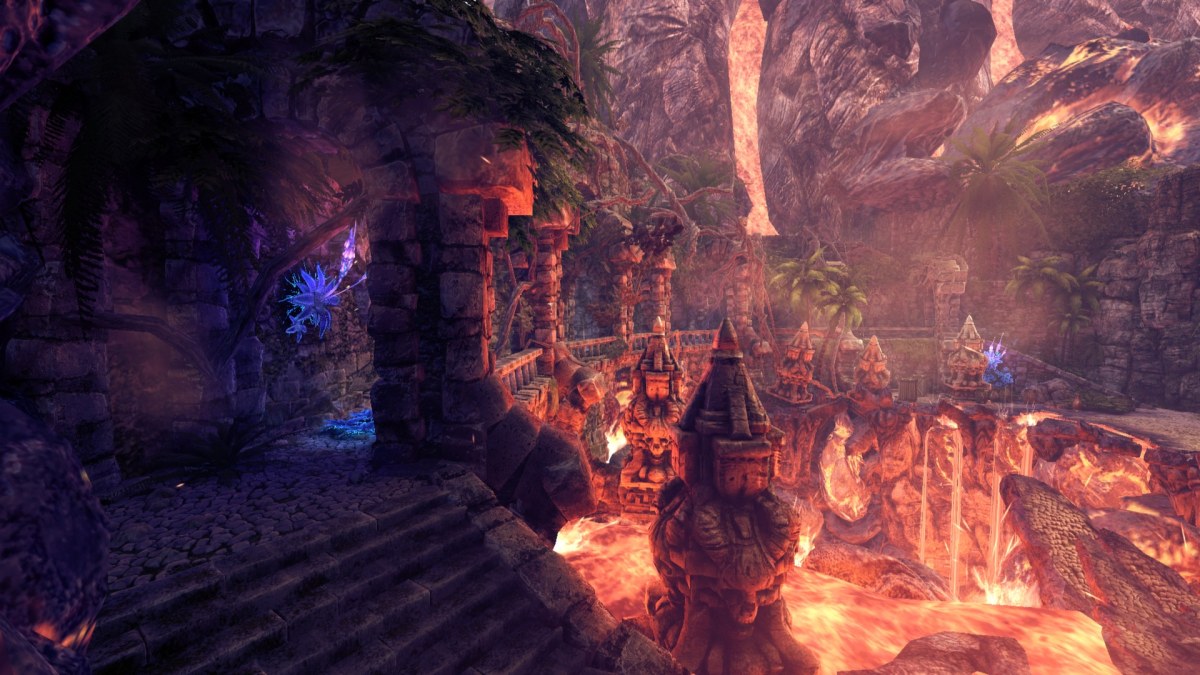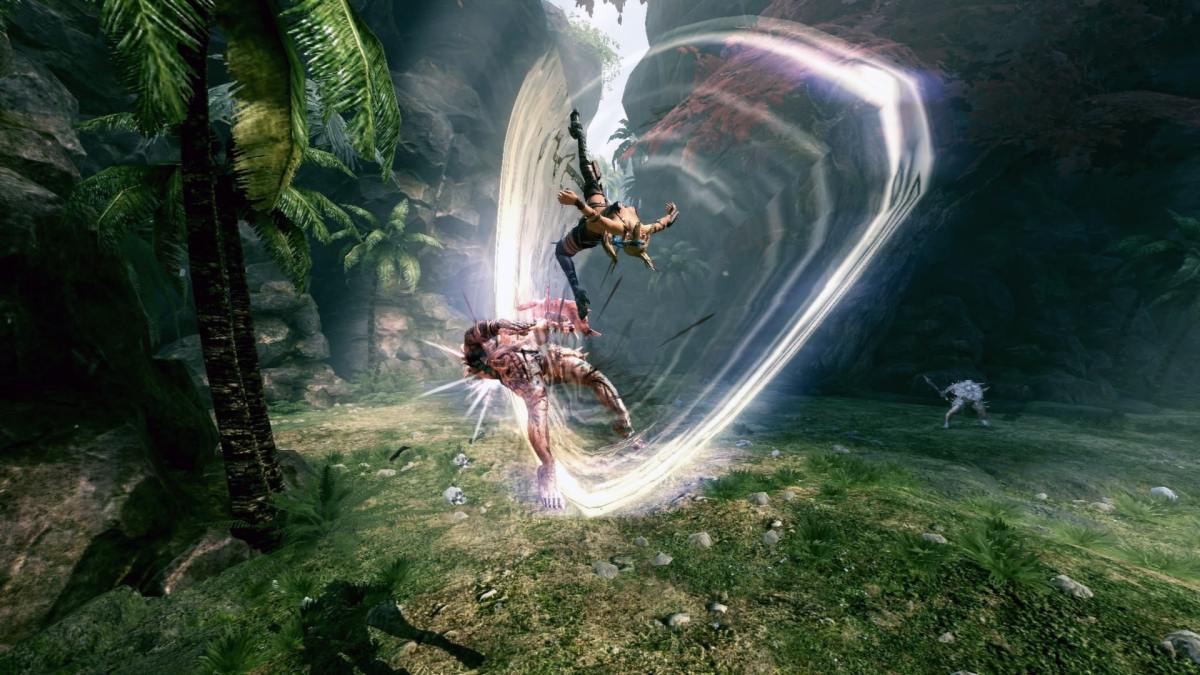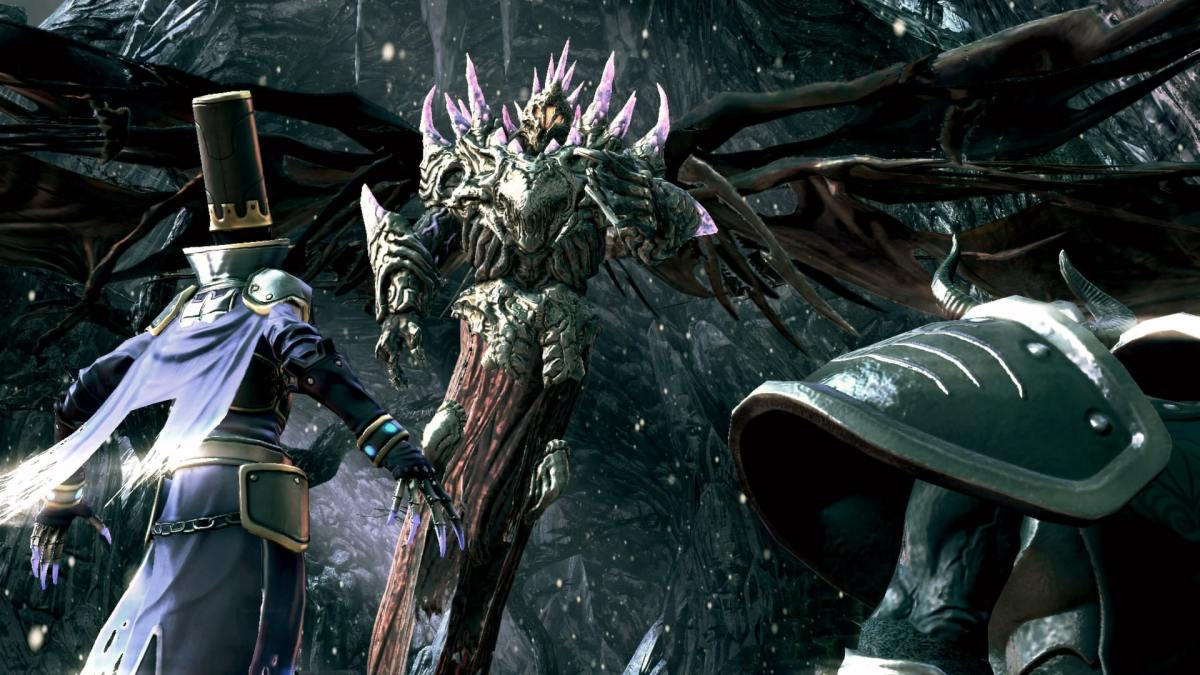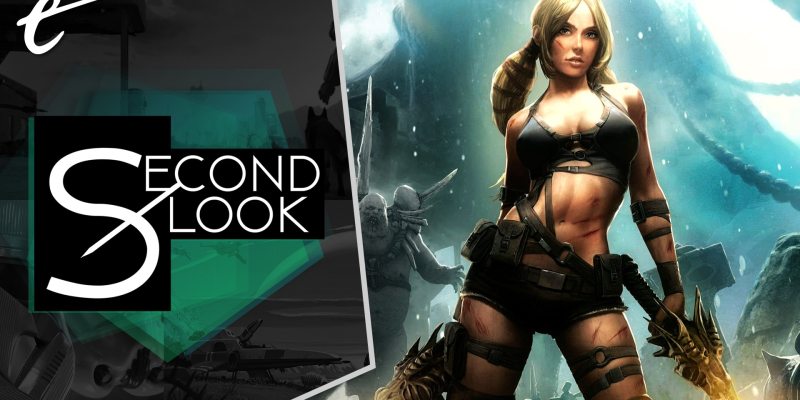I’ve talked about some weird games in this column, including some of the strangest stuff ever published in AAA gaming. Yet nothing I’ve talked about can prepare you for experiencing Konami’s last real new IP, Blades of Time. It’s a reboot-sequel to cringeworthy T&A-centric yet otherwise passable budget brawler X Blades, as well as a spiritual successor to Prince of Persia: Sands of Time. It also draws from Singularity and Zack Snyder’s Sucker Punch film for some reason. Yeah, there’s a lot to unpack here.
Blades of Time gets complicated quickly, only to never really slow down to think things through. On the surface, you expect a budget-tier Tomb Raider wannabe game, which it sometimes is. The facial animations and writing are a farce so incomprehensible that the setting is literally just named “Dragonland,” like some kid’s show except everyone takes things remarkably seriously. Well, everything except murder. Murder is surprisingly casual in Dragonland, which is fortunate as it’s often protagonist Ayumi’s solution to everything. She also tries to talk your ears off with constant babbling, commenting on anything that passes her gaze.
Fortunately, none of this matters. As much as I’m an advocate for taking narrative design in games more seriously, this is one where the less you try to understand it, the better you’ll be for it. Blades of Time is less a story, more a fever dream you can’t resist digging into. Nothing makes sense, which paradoxically ensures that everything meshes.

You can go from platforming across puzzle levels set in a lethal desert to repeatedly rewinding back in time to decimate the health of an otherwise immortal mecha-angel-thing-guy. At the press of a button, Blades of Time transforms from a decent-ish brawler in the vein of Devil May Cry to become a full-on third-person shooter. You can create infinite time clones of yourself, with an achievement for clearing a combat encounter in under 30 real-time seconds by mobbing enemies with time clones. Not to be outdone, there are platforming moves you can use in combat that open entire alternate avenues for fighting certain bosses. I haven’t even gotten to the crazier stuff, like the bits where you turn into a flying dragon-woman.
Blades of Time just lets you do all of this unless the scenario explicitly limits otherwise. You’re free to bounce between every ability as fast as you can hit the input, ensuring you’re always one step ahead of your enemies. It’s not that the game is lazy either. Certain threats can only be evaded by manipulating time, ensuring a remarkable amount of thought goes into how you use such a blatantly overpowered ability. You can perform takedown executions only possible with a clone opening an enemy up, and certain opponents can only be weakened with a barrage of your past selves. Furthermore, the best way to restore health is by maintaining a brutal pace, as your combo meter restores health charges after reaching a certain height.
While human faces may suffer, Dragonland’s aesthetics are gorgeous, particularly the environmental art. The sound design is satisfying, slashing and crunching through all manner of ghastly threats. It’s a world cast in the glow that’s both mesmerizing and sad. You can tell this ancient land is gasping its last breath as Ayumi and her human adversaries race to claim the powerful magic at the heart of it all. No matter how mediocre the story may be, the presentation is remarkable.

As if all that weren’t enough, Blades of Time throws in an entire multiplayer MOBA in the vein of Dota 2 and League of Legends. Mind you, this MOBA is not a core feature, just an extra. Just sitting there, if you feel like it, with co-op and PvP options across multiple maps. Because sure, why not, that’s totally what anyone would think to slot into an action-platforming-shooting-time-manipulating-puzzle-solving-magic-spewing adventure game.
Blades of Time fills me with indescribable awe and bewilderment. How does this game exist? What even is Blades of Time if not every game slowly, carefully being merged into a single mass? That it retains such a distinctive identity while combining over a dozen different other games into one is a feat Gaijin Entertainment should feel proud of. It’s bewildering, but genuinely impressive.
You don’t get games like this anymore in the AAA sector. This is the sort of maddeningly, accidentally brilliant toybox typically buried in the depths of Steam search queues. At the least it’s a worthwhile niche curiosity, as the game’s Very Positive rating on Steam contrasts with its middling-at-best press reviews. A cult classic like this often falls through the cracks, but even in this regard, Blades of Time refuses to follow a trend, having since been ported to Nintendo Switch. Both the PC and Switch versions have additional features, including an added mini-campaign and more multiplayer content to boot.

There’s no grand thesis to be found in Blades of Time; I’m not sure it needs one. It’s the anti-cohesive game that somehow meshes together perfectly despite itself. The very act of summarizing just a fraction of its madness is like an uphill climb in a blizzard with a yeti riding on your shoulders. And right now, you’re wondering if that’s something that actually happens in the game, because Blades of Time does that to your head. You learn to expect anything and everything. Rocket duel boss out of Quake? Sure. Teleporting between flowers? Why not? Time demons? But of course!
Blades of Time genuinely shouldn’t work as well as it does, and yet, as always, it defies that expectation. What should be an absolute mess of an experience is so wholly unique that it arrests your attention for hours at a time. Don’t let the gratuitous outfit Ayumi starts with or her ridiculous dialogue put you off of her journey. Blades of Time is absolutely an oddity worth playing.
